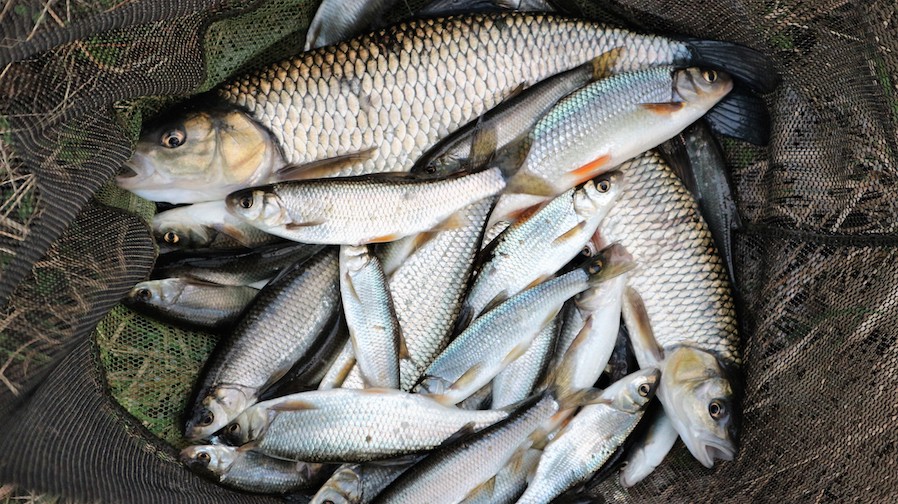Dave Coster - January Fishing Diary
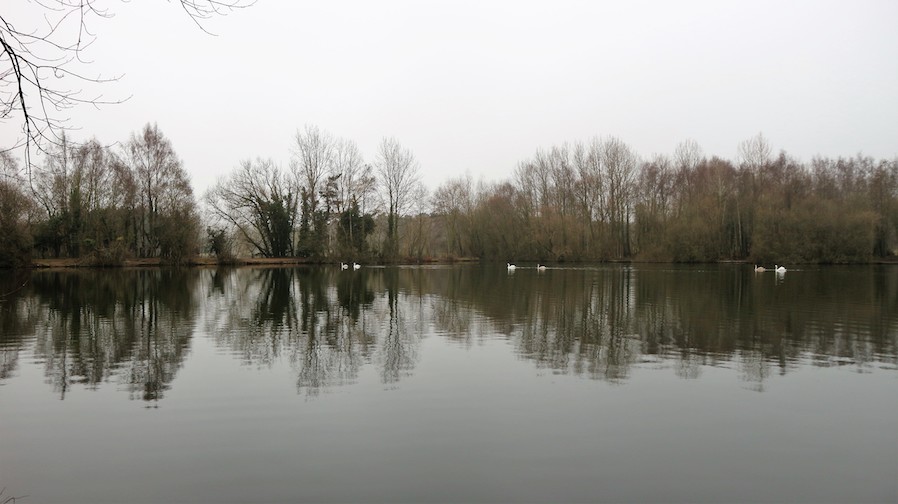
On my first couple of trips I planned to fish the long pole. I had noticed during previous visits that if you can get the roach feeding on this method, they averaged a bigger size, compared to fish I had seen being caught on feeder tactics. Also, with the pole, I had a few tricks up my sleeve for fooling crafty old roach!
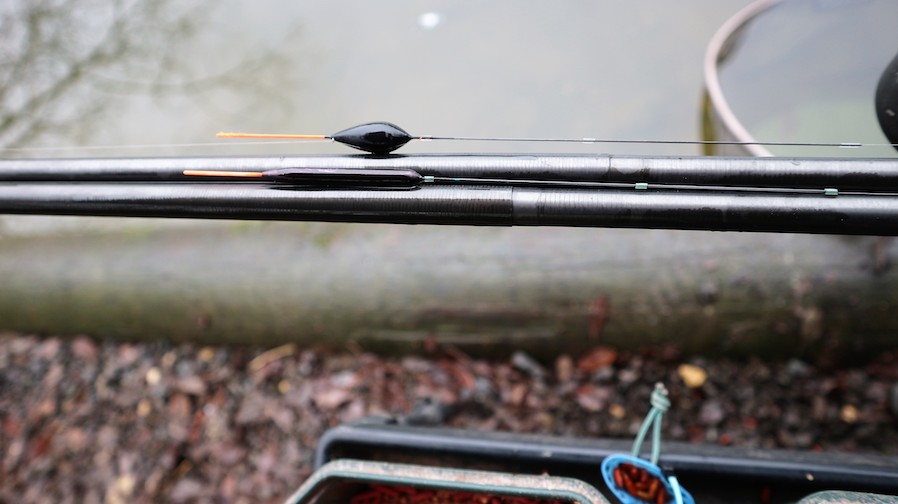
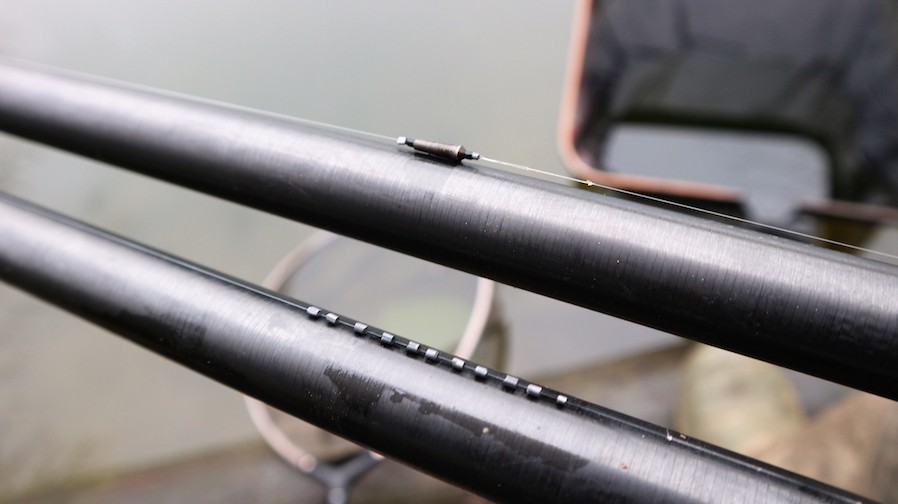
You need top four or even top five pole kits due to the depth of many of the swims at Woodlands. Bigger pole floats are required as well, carrying 0.75g to 1.5g loadings. I set up two rigs, one with an Olivette as the main bulk, but also a slightly lighter and much thinner float with a spread bulk of number 8 Stotz weights. The latter comes into play if the roach are showing interest as the rig settles, or with suspended hook baits, as it helps to give a slower fall rate as the float dots itself down. The Olivette rig is better for fishing over-depth and holding everything dead still, especially when the water is drifting, which it does a lot on this venue. I use a 0.08mm trace and size 20 hook with the strung rig and a 0.10mm trace combined with a size 18 hook with the Olivette set up. These are matched with tensioned up number 3 and 4 pole elastics respectively.
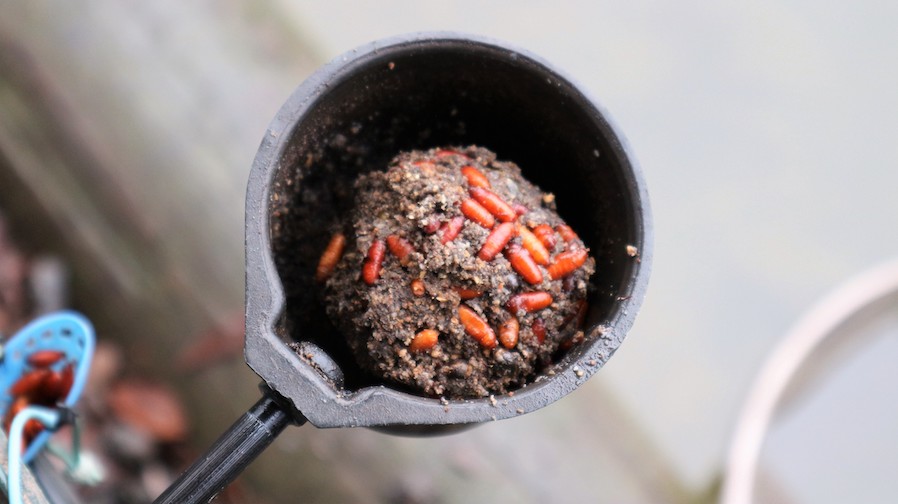
My favourite roach groundbait recipe is a mix of one third Sensas Black Noir, one third Sensas Black Lake and one third brown crumb. I premix and riddle this to get a nice fluffy consistency, and keep it in the fridge overnight in a plastic bag, so all the moisture fully absorbs into the particles. This is important to avoid any floating bits. I don’t want hungry seagulls or other waterfowl dive bombing my swim in the depths of winter!
I mix some dark casters and chopped worm into the groundbait. Darker casters, which are only just sinkers, are extremely lightweight so when they are on the bottom they are easily disturbed if fish move over them. I think this potential movement helps to activate fish in cold water, along with the chopped worm of course, which is a brilliant feeding stimulator.
Now for the really clever bit. I finally add in a couple of big handfuls of tinned hemp. Something I have noticed is tinned hemp fizzes a lot more oil to the surface than any seeds you cook yourself. Black Lake groundbait is also active by the way, so the two combined cause surface fizz for several minutes after feeding. All this activity can help to get you bites quicker, but has another very useful bonus; when the initial surface fizz dies away, the groundbait and freebies can lie on the bottom for several hours undisturbed, but as soon as anything agitates the feed it starts to fizz off oils again. Providing the surface is fairly flat, you can see this activity and it immediately lets you know that fish have started feeding in your swim!
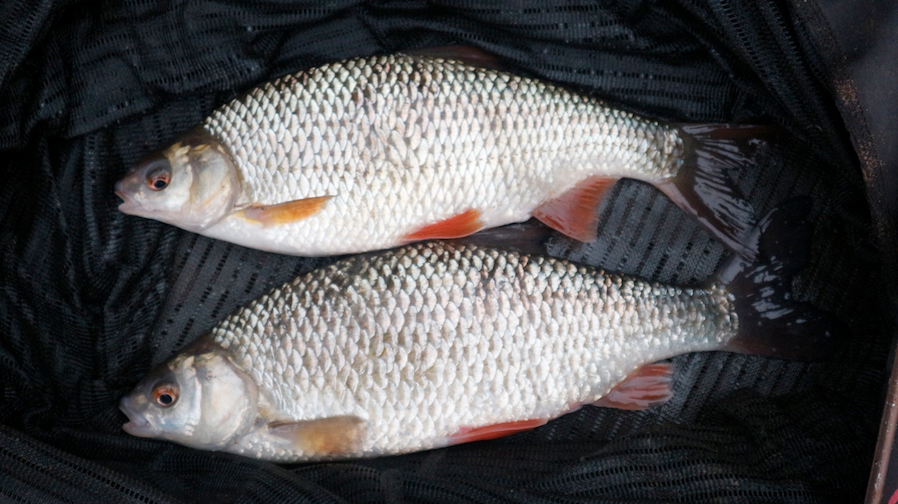
My first two sessions were rock hard. It was very cold, and I think the lake had been iced over a few days before. On both occasions I didn’t get any action until the last hour of daylight. I knew something was about to happen, because the groundbait and hemp I had fed earlier started to fizz off lots of tiny oil bubbles. Something was down in the depths disturbing it, and, sure enough, I started to get tiny indications on my pole float. The first trip resulted in two proper bites and a pair of clonking roach, but on the return visit I failed to connect with anything during the late fizzing period, although I’m certain big roach had again started to feed in my swim.
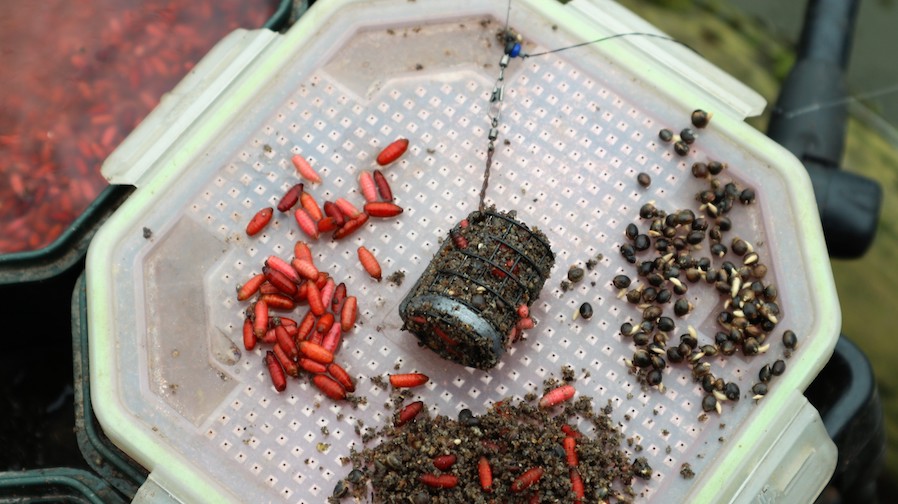
It was blowing a gale for my next Woodlands trip, and not wanting to spend several hours sitting like a garden gnome with the pole, I decided to switch to feeder tactics. I relied on the same groundbait and freebies menu I had used previously, although obviously wouldn’t be able to see what was happening 50 metres out in the lake!
It took a good hour of casting my clipped-up cage feeder into the same spot before I started to get any indications. These were tiny movements on my super sensitive quivertip, where I suspected fish were only lightly mouthing my double red maggot hook offering. They didn’t develop any further, so next time this happened I tried twitching the rig a few inches along the bottom. My quivertip sailed round instantly, resulting in a 12oz roach. I missed a few bites after that, still using the bait twitching trick, so I scaled down from a size 18 to a 20 hook and tried a single caster. Once again, only slight touches signalled on my quivertip, but moving the bait immediately afterwards helped to provoke more proper takes. I caught a string of decent roach, a couple nudging the pound mark, then connected with a real rod bender. Judging by the plodding nature of the fish, I think it was a big bream. I coaxed it all the way in and was just reaching for my landing net when the tiny hook pulled free. I was not happy!
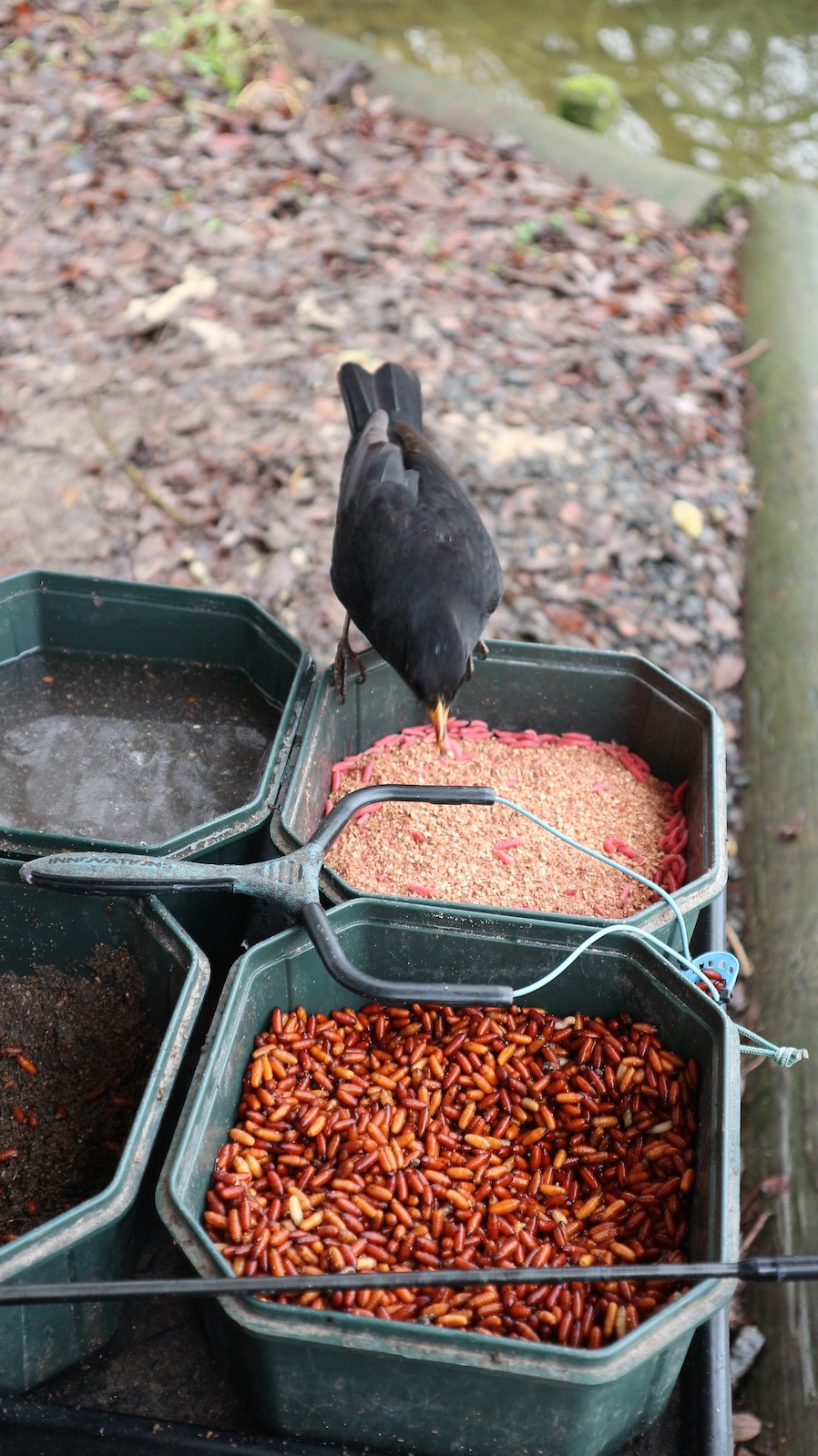
While I was calming down after that lost lump of a fish, a friendly blackbird kept me amused. It perched on my bait boxes and couldn’t seem to make its mind up if it wanted maggots or casters. Its head was moving back and forth like someone watching a game of tennis, until finally it opted for the maggots. I nearly missed my rod being pulled off its rest as I watched all this and was suddenly connected to another good fish. It turned out to be my best roach of the day, just over the pound mark, I estimated.
After that I suffered some dead spells, interrupted by short flurries of action. I was still putting a half decent catch together, mostly quality roach and the odd perch. The feeder had brought a lot more action than the pole, but once again the fish were not quite as big.
Next trip to the lake I tried a new area, in the bay opposite the bar and restaurant. I opted for the feeder again as my main line of attack, but also set up the pole in case any big roach turned up late. Much to my surprise, I got bites almost instantly on the feeder, casting around 40 metres out. But the fish were a lot smaller, mainly perch and the odd 3 to 4oz roach. This time I couldn’t buy a bite on casters, or even small segments of worm. It had to be red maggot to get any response. Eventually
the feeder dried up altogether, so I spent the last hour of daylight on the pole. There were no visible signs of activity over this closer feed line, and all I caught last knockings was a couple of small perch.
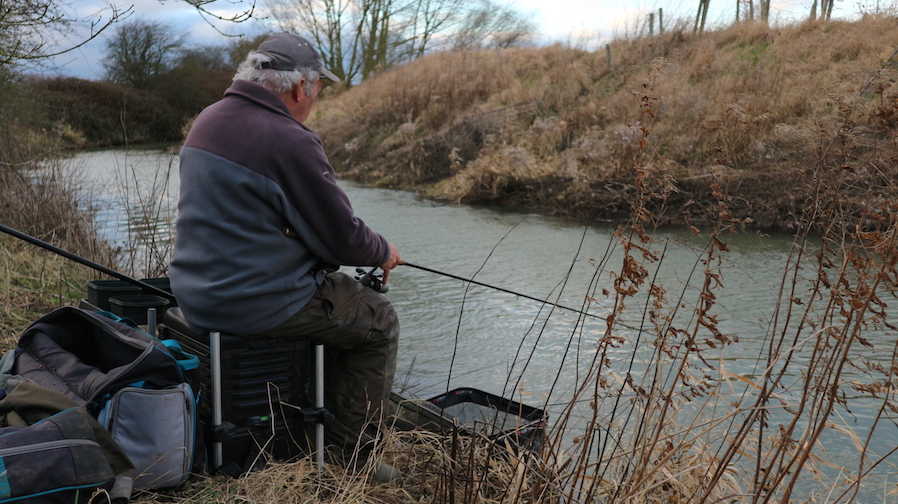
It was nearly the end of the month and at last the River Witham had fined down, after being chocolate coloured the last time I saw it. I headed off to explore a new area on the upper stretches. I had walked the venue a couple of months before, when it was gin clear and painfully shallow. However, with extra water still running through and some colour, it looked quite inviting now.
I carefully picked a tree line straight above an overgrown bend, where there was a bit of shelter from the gusting upstream wind. I reckoned I would just about be able to trot a stick float down and hopefully pull fish up from the more secluded sweep in the river at the end of the run.
I patiently drip-fed casters, hemp and a few red maggots for over two hours without so much as a sign of a bite. My stick float was running down the shallow run almost perfectly, apart from the odd occasion when the increasingly swirling wind pulled it off course. I was just thinking about moving when my float dipped under and at last a fish was on! It was only a small dace, but it was like someone had flicked a switch after that; the swim sprang to life. I caught a string of small dace on maggot, then a switch to caster started to pull better samples, up to 8oz.
Suddenly the dace bites dried up, and my float travelled several yards further down the swim before it went under. My rod tip arched round under the strain of something much bigger. The unmistakable thumping transmitted down my slim float blank told me this had to be a chub.
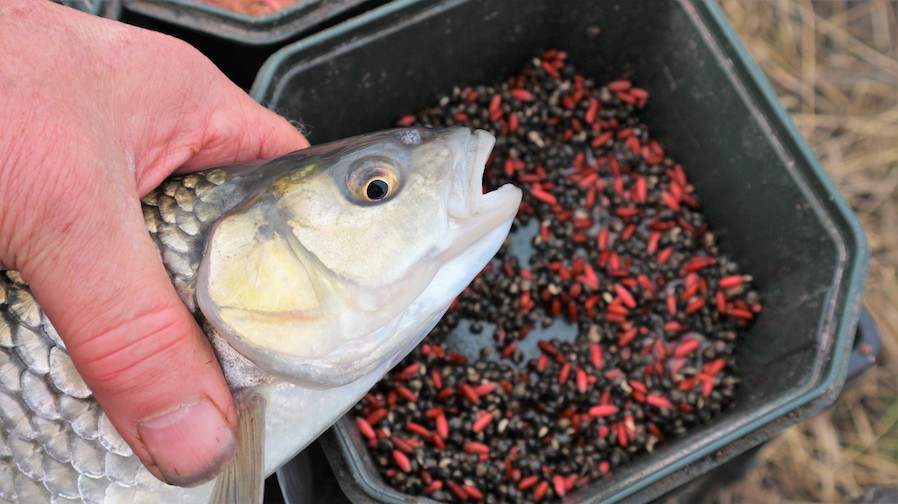
After the chub was landed the dace came back, and I had to whittle my way through quite a few of them before another rod bender interrupted proceedings. This felt like an even bigger fish, but its juddery movements as it darted all over the swim had me a bit confused as to what it was. Eventually a lump of a trout exploded on the surface and I quickly scooped it out with my landing net. Blimey, I thought to myself, this really is an amazing little river!
I had a cup of coffee next, still feeding the swim, to try and let things settle down after all the commotion. First run through with my float after that resulted in a grayling - around the one-pound mark - jumping clear of the water and spitting my hook out. This was followed by a decent chub doing exactly the same thing, followed by another decent trout, which I did manage to land.
Despite all the disturbance in a swim less than two feet deep, the dace quickly returned, and for the next hour I enjoyed trying to connect with the lightening fast bites these bars of silver give you. A busy dace session really sharpens up your reflexes and it has been far too many years since I’ve enjoyed river action like this. But once again, something big unsettled the shoal. I ran my float through the swim several times until I discovered what it was. Double maggots did the trick this time, and after another hard scrap a decent chub was gracing my landing net.
I would have thought such a shallow and narrow swim might start to dry up after that, but no, the dace returned. They were getting a bit cagey by now and I had to work my float tackle hard, all over
the run, to keep the bites coming. But a steady stream of fish kept feeding into my keepnet before another big trout finally destroyed the swim by tail-walking all over it!
Funnily enough, a fly angler had politely asked me if he could fish the next peg down on the far bank a bit earlier and had witnessed most of my trout action. Only trouble was, I don’t think he had anything that resembled casters or red maggots! Anyway, I had had enough by now and as it was a long walk back to my car, I took a catch shot and packed up.
On the way home I reflected on a what a tricky but interesting month January had been. No matter how harsh the weather and after several difficult days fishing, there’s always a surprise outing like this particular one, when everything comes together. Roll on February!
